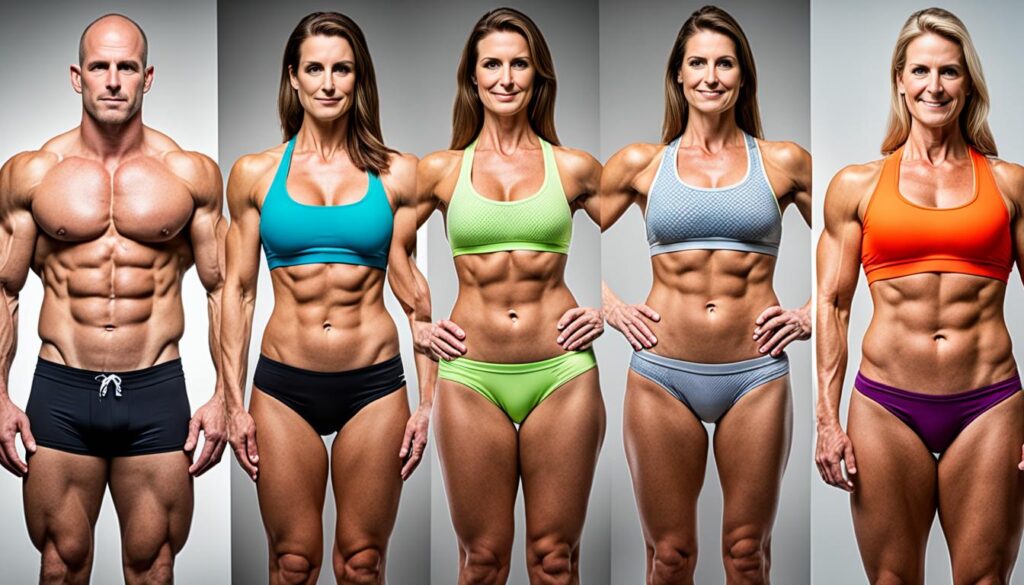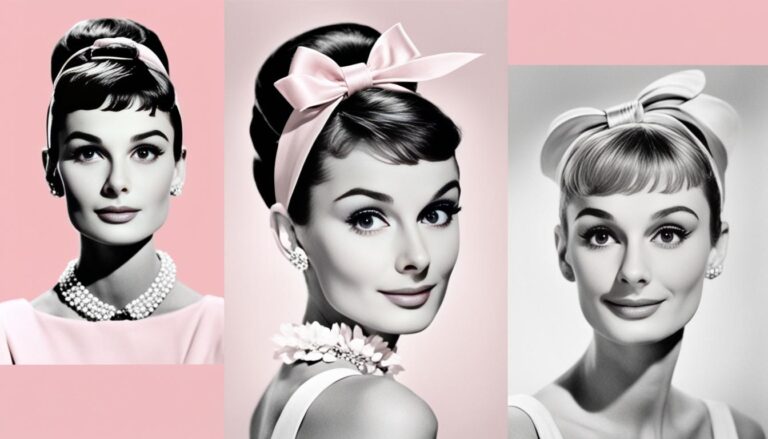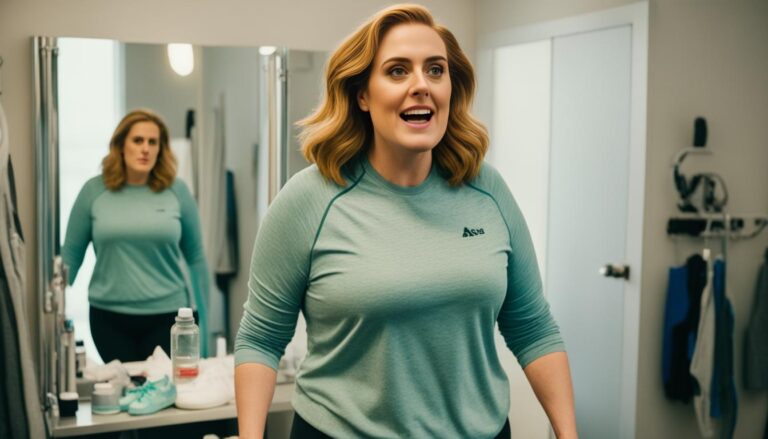What is the Most Attractive Body Fat Percentage?
When it comes to attractiveness, body fat percentage plays a significant role. But what exactly is the most attractive body fat percentage? Well, it turns out that the answer may vary depending on various factors. According to a study reported by Business Insider, women were asked to rate pictures of men with different body shapes. The study found that 12% body fat was considered the most attractive by these women.
However, attractiveness in terms of body fat percentage follows a bell-shaped curve. This means that both higher and lower body fat percentages can reduce attractiveness. In fact, being too lean can also be unattractive, suggesting that there is an optimal range for body fat percentage that is considered attractive.
Key Takeaways:
- The most attractive body fat percentage for men, according to a study, appears to be around 12%.
- Both higher and lower body fat percentages can reduce attractiveness.
- Being too lean can also be unattractive, indicating that there is an optimal range for body fat percentage.
- Attractiveness in terms of body fat percentage follows a bell-shaped curve.
- It is important to find a balance between a healthy and attractive body fat percentage.
Health Benefits of a Healthy Body Fat Percentage
Maintaining a healthy body fat percentage provides numerous advantages to your overall well-being. It is not just about appearances; it can significantly impact your long-term health and reduce the risk of various diseases. By maintaining a healthy body fat percentage, you can experience:
- Higher Testosterone Levels: A healthy body fat percentage is associated with higher testosterone levels, which can enhance muscle growth, bone density, and overall vitality.
- Lower Stress Levels: Having a healthy body fat percentage can help regulate stress hormones, promoting better mental well-being and reducing the risk of stress-related diseases.
- Reduced Risk of Diabetes: Excessive body fat can increase the risk of developing diabetes. By maintaining a healthy body fat percentage, you can significantly reduce the likelihood of developing this chronic condition.
- Reduced Risk of Cardiovascular Disease and Heart Attacks: Excessive body fat is often associated with cardiovascular problems and a higher risk of heart attacks. However, a healthy body fat percentage can help maintain optimal heart health.
- Better Joint Health: Excess body fat can place additional stress on your joints, increasing the risk of joint pain and problems like osteoarthritis. Maintaining a healthy body fat percentage can help alleviate this strain and promote better joint health.
- Improved Fertility: For both men and women, maintaining a healthy body fat percentage is crucial for reproductive health. Excessive or inadequate body fat can disrupt hormonal balance and negatively affect fertility.
Reduced Risk of Diseases
Achieving and maintaining a healthy body fat percentage not only improves your physical appearance but also reduces the risk of various diseases. Research has shown that excessive body fat is associated with an increased likelihood of developing conditions such as diabetes, cardiovascular disease, and heart attacks. On the other hand, having a healthy body fat percentage can significantly lower these risks, improving your overall quality of life.
“Maintaining a healthy body fat percentage is not just about looks; it’s about taking care of your body and reducing the risk of diseases. It’s about investing in your long-term health and well-being.”
By focusing on achieving and maintaining a healthy body fat percentage, you can not only feel more confident in your appearance but also enjoy the numerous health benefits it provides. Strive for a body composition that falls within the healthy range and reduces the risk of diseases, allowing you to live a more fulfilling and vibrant life.
The Role of Body Composition in Attractiveness
When it comes to attractiveness, body composition plays a crucial role. It encompasses both body fat percentage and muscle mass, determining the overall physique of an individual. For women, the body fat percentage of men is a key factor in determining their level of attraction. Women tend to find men with a healthy body fat percentage more appealing due to the associated health benefits.
Men with a higher muscle mass to fat ratio are often considered more attractive. This is because a higher muscle mass signifies strength, physical fitness, and a well-defined physique. Achieving a balanced body composition requires maintaining a healthy body fat percentage while building and preserving lean muscle mass.
It’s important to note that body fat percentages can vary between men and women. While the ideal body fat percentage for attractiveness may differ between the sexes, both genders can benefit from maintaining a healthy balance between body fat and muscle mass.
The Ideal Body Fat Percentage for Men and Women
The ideal body fat percentage for men is typically lower than that for women, as men naturally have a higher muscle mass. However, the specific ideal body fat percentage can vary depending on individual preferences and cultural standards. Generally, a body fat percentage of 10-20% is considered healthy for men, while a range of 18-28% is considered healthy for women.
Women tend to naturally have a higher body fat percentage due to hormonal differences and reproductive functions. This higher body fat percentage is essential for maintaining hormonal balance and supporting reproductive health. Additionally, women typically have a higher proportion of essential fat, which is necessary for their overall well-being.
For a visually engaging perspective, here is a comparative table showcasing the ideal body fat percentage ranges for men and women:
| Gender | Ideal Body Fat Percentage Range |
|---|---|
| Men | 10-20% |
| Women | 18-28% |
Please note that these ranges are general guidelines, and individual preferences and body compositions may vary.

The Pitfalls of Extreme Body Fat Percentages
Extreme body fat percentages may seem appealing for achieving a shredded physique like those seen in bodybuilders and fitness models. However, it’s important to understand the potential health risks associated with such extreme levels. These individuals often undergo rigorous dieting and exercise regimens to achieve low body fat percentages, pushing their bodies to the limit.
While the quest for a shredded physique can be driven by aesthetic goals, it’s crucial to prioritize overall health and well-being above all else. Here are some of the health risks that extreme body fat percentages can pose:
- Hormonal imbalances: Extremely low body fat percentages can disrupt the delicate balance of hormones in the body, leading to various health issues.
- Increased stress levels: The strict and intense regimens required to maintain extremely low body fat levels can put significant stress on both the body and mind.
- Higher risk of eating disorders: The pursuit of extreme body fat percentages can contribute to the development of unhealthy eating patterns and disordered eating behaviors.
- Cardiovascular health issues: Very low body fat levels can impact cardiovascular function and increase the risk of heart-related problems.
To achieve and maintain extreme body fat percentages, individuals often make sacrifices that can have long-term consequences on their health. It is important to approach fitness and body composition goals in a sustainable manner, focusing on overall well-being rather than solely chasing a specific body fat percentage.
The Disconnect between BMI and Attractiveness
When it comes to assessing attractiveness, body mass index (BMI) has often been used as a measure of overall health. However, BMI fails to differentiate between fat and muscle mass, leading to a disconnect between BMI and what is considered attractive.
In reality, individuals with a higher muscle mass may have a higher BMI, even if they have a healthy body fat percentage. This is because muscle weighs more than fat, and BMI does not take into account body composition. For example, a person with a muscular physique may fall into the “overweight” category according to BMI, despite having a low body fat percentage and a physically fit appearance.
Interestingly, studies have shown that women are often more attracted to men with higher muscle mass, even if it puts them in the overweight category according to BMI. This suggests that women’s preferences for a muscular physique override the traditional notions of BMI-based attractiveness.
To accurately assess attractiveness, it is crucial to consider body composition, including both muscle mass and body fat percentage. While BMI may provide a general indication of overall health, it fails to capture the nuances of a person’s physique and attractiveness.
Why Body Composition Matters
Body composition, which takes into account both muscle and fat mass, plays a pivotal role in attractiveness. Men with a higher muscle mass to fat ratio are often considered more appealing due to the association of muscle with strength, physical fitness, and vitality. Likewise, women with a healthy body fat percentage and a well-toned physique are typically perceived as attractive.
By solely relying on BMI, we overlook the importance of muscle mass and body fat percentage in determining attractiveness. It is essential to prioritize a balance between muscle and fat, rather than simply aiming for a lower BMI.
| Body Mass Index (BMI) | Body Composition | Attractiveness |
|---|---|---|
| High BMI | Higher fat mass | Likely less attractive |
| Low BMI | Lower overall weight | Potential lack of muscle |
| Healthy BMI | Optimal muscle to fat ratio | Commonly perceived as attractive |
As seen in the table above, a healthy BMI does not necessarily equate to an attractive physique. Instead, it is the balance between muscle mass and body fat percentage that contributes to overall appeal.

When considering attractiveness, it is important to remember that a healthy body fat percentage and a well-defined muscular physique can be more appealing than a low BMI. Achieving a healthy body fat percentage and maintaining a physically fit appearance should be the focus, rather than simply aiming for a specific BMI number.
Conclusion
The ideal body fat percentage for men, according to a study, appears to be around 12%. This range falls within the healthy and attractive body fat percentage category, promoting overall well-being and reducing the risk of diseases. It is important to note that prioritizing overall health and well-being is crucial, rather than striving for extreme body fat percentages.
Finding a balance between a healthy and attractive body fat percentage is key for both aesthetic appeal and long-term health. While maintaining a healthy body fat percentage plays a role in attractiveness, it is essential to consider the broader aspects of health and wellness.
By focusing on a healthy and balanced lifestyle that includes regular exercise, a balanced diet, and proper self-care, you can achieve an ideal body fat percentage that not only enhances your appearance but also supports your long-term well-being. Remember, the goal is to strike a balance between a healthy body fat percentage and an attractive physique, enhancing both your physical and mental health.
FAQ
What is the most attractive body fat percentage?
According to a study reported by Business Insider, 12% body fat is considered the most attractive by women. However, attractiveness by body fat follows a bell-shaped curve, meaning that both higher and lower body fat percentages can reduce attractiveness.
What are the health benefits of a healthy body fat percentage?
Having a healthy body fat percentage is associated with higher testosterone levels, lower stress levels, reduced risk of developing diabetes, cardiovascular disease, and heart attacks, as well as better joint health and fertility.
What is the role of body composition in attractiveness?
Body composition, which considers both fat and muscle mass, is important in attractiveness. Men with a higher muscle mass to fat ratio are often considered more attractive as it signifies strength and physical fitness.
What are the pitfalls of extreme body fat percentages?
Extreme body fat percentages, such as those seen in bodybuilders and fitness models, may not be healthy or sustainable in the long term. They can lead to health risks like hormonal imbalances, increased stress levels, higher risk of eating disorders, and cardiovascular health issues.
How does BMI relate to attractiveness?
Body mass index (BMI) does not differentiate between fat and muscle mass. Individuals with higher muscle mass may have a higher BMI, despite having a healthy body fat percentage. Body composition, particularly muscle mass and body fat percentage, should be considered when assessing attractiveness, rather than solely relying on BMI.
What is the ideal body fat percentage for both attractiveness and health?
The most attractive body fat percentage appears to be around 12%. This falls within the range considered healthy for overall well-being and reduced risk of diseases. It is important to find a balance between a healthy and attractive body fat percentage.






